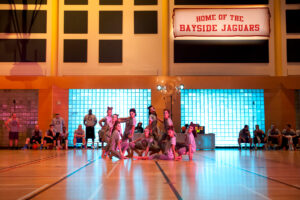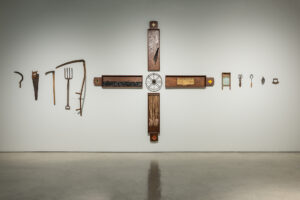On first approach, Gary Evans’ paintings strike us with their bold colours and dramatic organic forms that seem to float in space. Then a patch of landscape appears, or a suburban house, gas station, or apartment building. It’s as if the paint has a mind of its own, echoing among the various bits of landscape that anchor these compositions in time and space. Like a swirling coral reef that has set up house on a sunken ship, the paintings vivdly burgeon forth amid the mundane reality of everyday experience. This collision between abstraction and landscape painting is apparent in the work of several other contemporary Canadian artists, including Wanda Koop, David Urbam, and Monica Tap.
The suburbs and small towns of Ontario, where Evans grew up and still lives, never looked like this before. Do these paintings suggest an estrangement and dislocation from this familiar reality? Or in contrast, do they evoke a hidden beauty in everyday experience? Perhaps they suggest more of the energy and dynamics of living things than reality itself. In such unstable territory, it is ultimately up to the viewer to decide.
The title of the exhibition suggests the perpatetic nature of the landscape painter’s practice as he moves from one location to the next. Each scene, or station, provides the opportunity for an encounter with the real. But this position and indeed, reality itself are never fixed or static. What Evans reveals in his swirling, dynamic pictures is the fleeting, transitory nature of all things. In contrast to the conventional impulse in image making to render the real as a fixed and stable set of relationships, Evans, in contrast shows how all things are relative and intangible.





